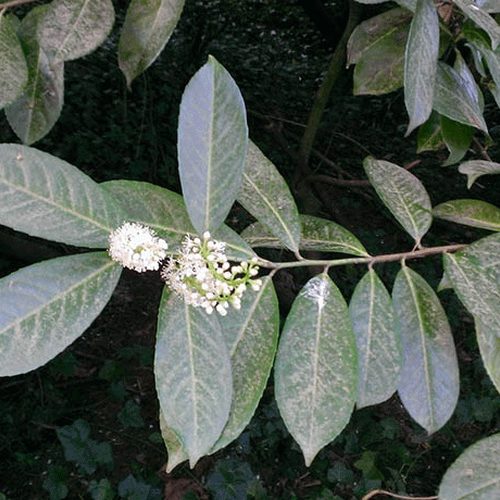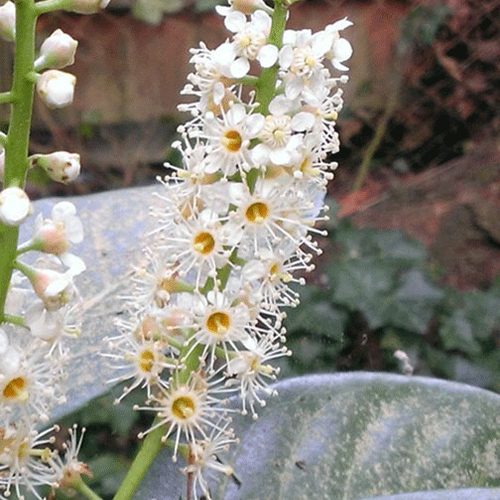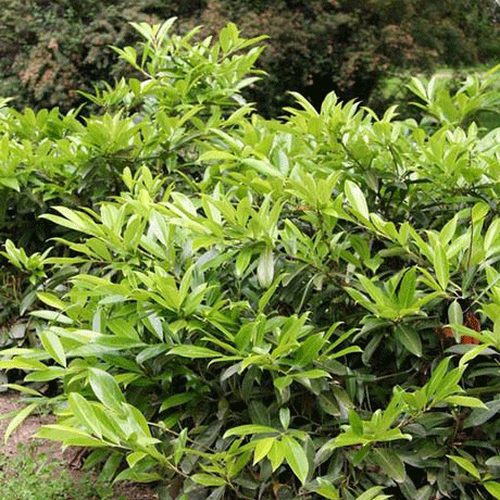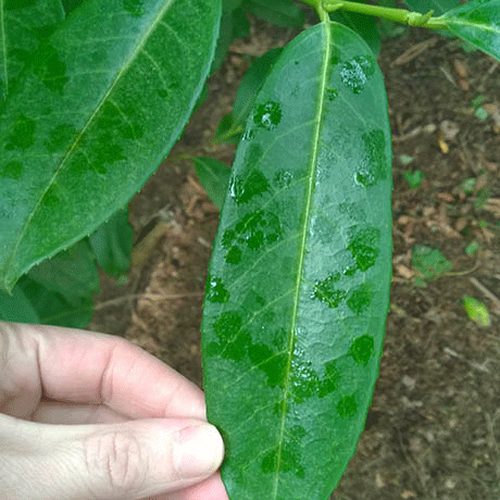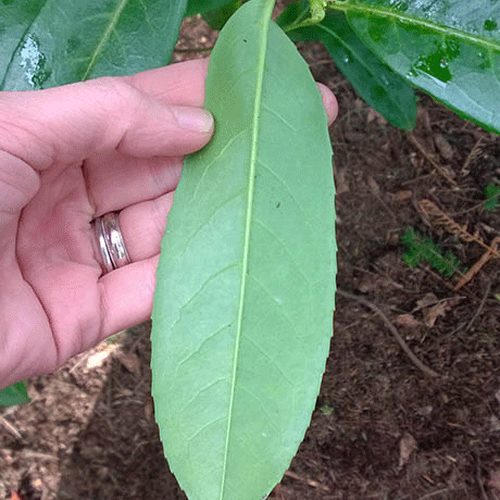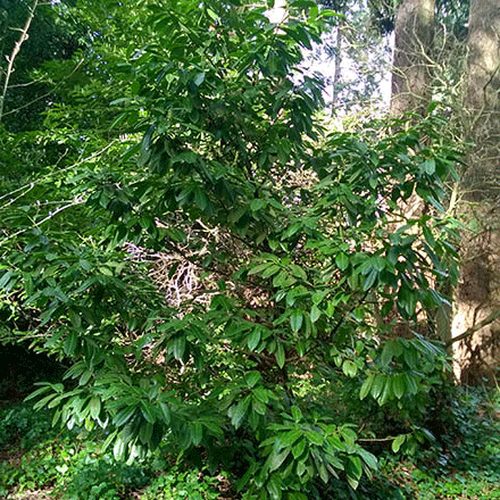Cherry Laurel
Prunus laurocerasus
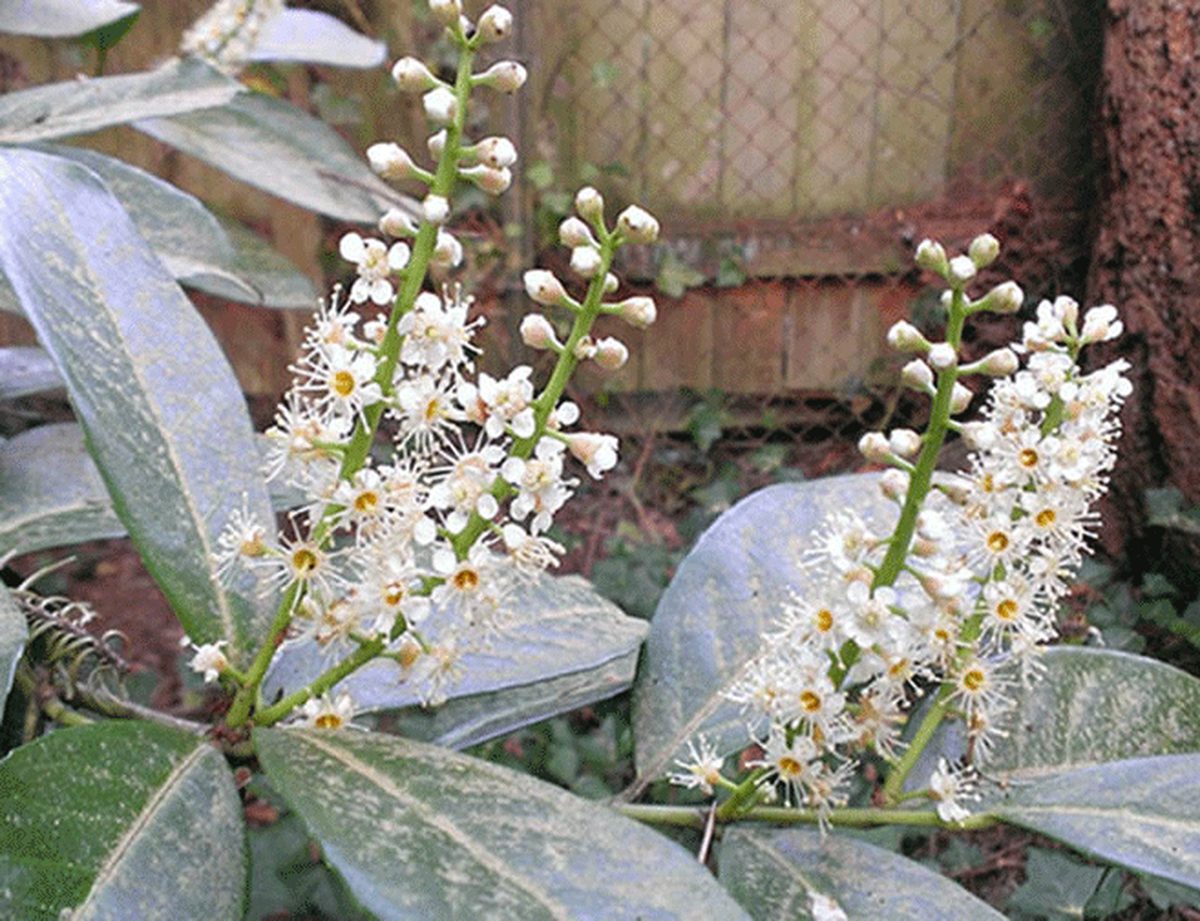
Family: Rosaceae
Other Common Names: common laurel, English laurel
Weed class: monitor list
Native to: Asia and Europe
Is this Weed Toxic?:
humans, livestock
Why Is It a Noxious Weed?
This plant is on the monitor list - it is not a listed noxious weed in Washington. Please contact the Laurel Baldwin via noxiousweeds@agr.wa.gov to report locations of where plants are found growing outside of ornamental plantings.
How would I identify it?
General Description
Large, spreading, evergreen shrub, growing to around 20 feet tall and wide spreading.
Flower Description
Flowers in upright racemes, 2-5 inches long. Flowers white, with 5 petals and about 0.4 inches (1 cm) wide.
Leaf description
Leaves are alternately arranged, leathery with serrated to almost smooth margins and two glands at the base of the blade near point of attachment with petiole. Leaf blades ~2-8 inches long, oval to elliptic-oblong in shape, and dark to medium green above, paler green below.
Stem description
Stems have smooth reddish brown to dark brown bark. New stems are green.
Fruit Seed Description
Fruit is a black to purple-black drupe, 0.5" long.
Where does it grow?
Cherry laurel is used in landscape plantings. It has been documented escaping from gardens in western Washington by herbarium specimens in a number of counties.
How Does it Reproduce?
Plants spread by seed and can resprout from cut stems. Birds eat the fruit and can spread seeds into remote areas.
How Do I Control It?
Please refer to the PNW Weed Management Handbook, or contact your county noxious weed coordinator.
For More Information
King County Noxious Weed Control Board information on Prunus laurocerasus
WTU image database information on Prunus laurocerasus
Information on cherry laurel from the Invasive Plant Atlas



